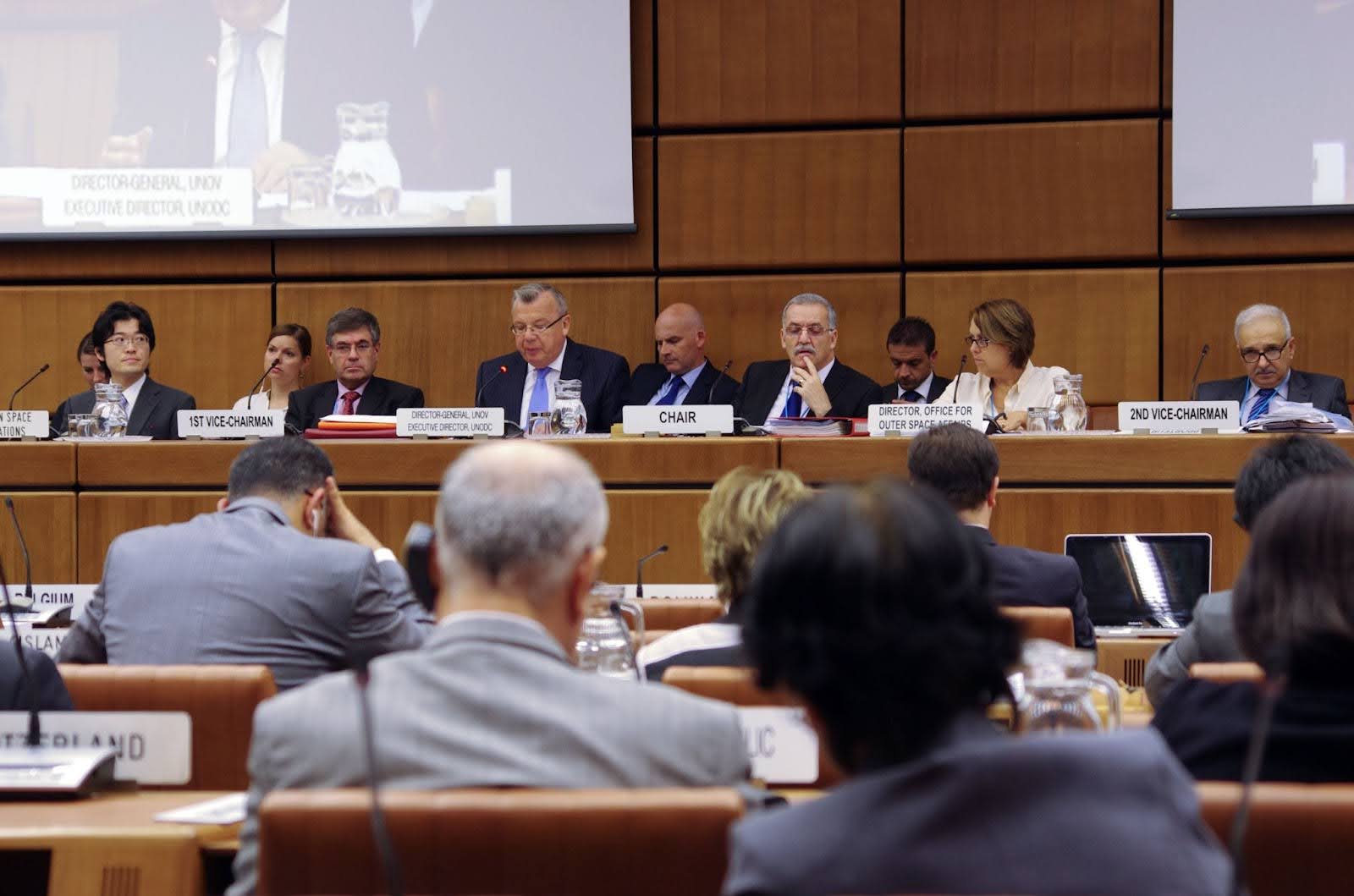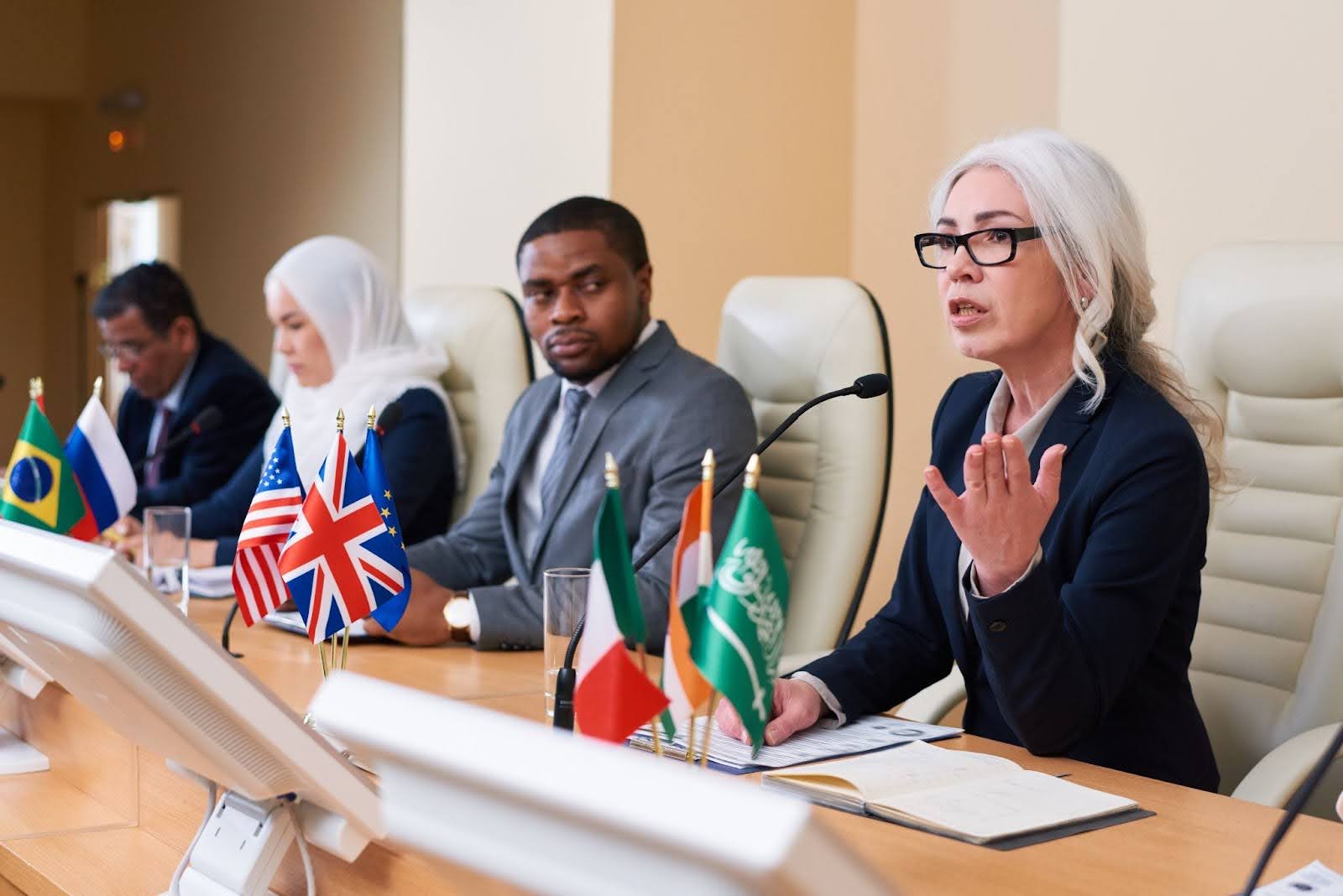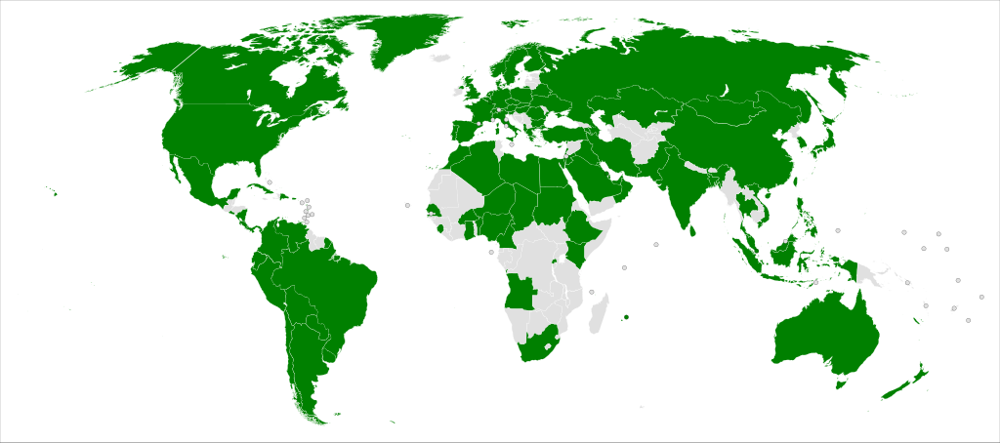Today, we’re exploring a topic at the intersection of international law, diplomacy, and the final frontier: the United Nations Committee on the Peaceful Uses of Outer Space, or simply COPUOS for short. If you care about the future of space mining, COPUOS should definitely be on your radar. Why?
It’s an international body shaping the legal and cooperative framework for how humans interact with space. This blog post will explore the ins and outs of COPUOS, shedding light on how this committee influences space policy and governance.
What Is COPUOS?

The United Nations Committee on the Peaceful Uses of Outer Space, commonly referred to as COPUOS, is an international committee dedicated to ensuring that outer space is utilized for peaceful purposes and the benefit of all countries. Established in 1959 by the UN General Assembly, COPUOS serves as the global forum for developing space law and promoting cooperation in space activities.
It was created during the Cold War, when space was rapidly becoming the new strategic frontier, with the goal of ensuring cooperative and peaceful space exploration, rather than it becoming another arena for human conflict. The committee is based in Vienna, Austria, and operates under the auspices of the United Nations Office for Outer Space Affairs (UNOOSA).
Origins & Historical Background of UN’s COUPUS
COPUOS was born in the early Space Age amid both excitement and concern over humanity’s first steps into orbit. In 1957, the Soviet Union launched Sputnik 1, the world’s first satellite, sparking the Space Race between the U.S. and the USSR. World leaders quickly realized that conflict in space could arise if not managed carefully.
In response, the UN General Assembly established an ad hoc Committee on the Peaceful Uses of Outer Space in 1958, with 18 initial members, to discuss how space should be governed. The main concern was to ensure space would be used for peaceful purposes and that the benefits of space activities would be shared by all nations. In 1959, COPUOS was formally made a permanent UN committee, and its membership expanded to 24 member states.
The UN General Assembly stepped in with Resolution 1721 (XVI) in 1961, which reaffirmed that international law and the UN Charter apply to outer space and directed COPUOS to study the legal questions of space exploration. This resolution also urged countries to report all space launches to COPUOS for a public registry and exchange information on their space activities.
This set the stage for COPUOS to become the central platform for maintaining the outer space environment as a realm of peace and cooperation. Under its guidance, the world’s first space treaties were opened for signature, and this historical legacy underpins the committee’s continuing work today.
What Does the Committee Do? The Purpose & Core Functions of COPUOS
Think of COPUOS as the global meeting room where countries come together to hash out the rules of the road for space matters. Unlike national agencies, COPUOS’s power lies in diplomacy, international agreements, and consensus-building.
It reviews international collaboration in space exploration (COPUOS has been instrumental in drafting foundational treaties and principles that form international space law), encourages cooperation and exchange of scientific and technical information among countries, and studies technical and legal issues arising from humanity’s ventures beyond Earth.
The committee plays a crucial role in shaping how nations conduct themselves in outer space, from preventing an arms race in space to ensuring the benefits of space technology are shared broadly.
The Structure of COPUOS & How It Works

COPUOS operates as a committee of the UN General Assembly devoted exclusively to outer space cooperation. It has a multi-tiered structure to tackle the diverse aspects of space activities, operating with three main bodies.
Main Committee
The full COPUOS committee meets once each year (usually in June in Vienna, Austria) and includes all member states. It addresses broad policy questions, reviews the work of the subcommittees, and reports directly to the UN General Assembly. All formal decisions are made here, by consensus rather than by voting.
This approach means every member must agree (or at least not object) for a resolution or report to be adopted, giving each state, large or small, an equal negotiating voice. While reaching a unanimous agreement can be slow, it has the benefit of producing widely accepted outcomes.
Scientific and Technical Subcommittee (STSC)
The STSC focuses on the scientific and technological aspects of space exploration. It meets every year (typically for two weeks in February) to discuss topics like space weather, near-Earth objects (asteroids), satellite communications and navigation, and mitigating space debris. This is where guidelines for space debris mitigation and long-term sustainability of space activities have been developed. Recommendations from the STSC are forwarded to the main committee.
Legal Subcommittee (LSC)
The Legal Subcommittee meets annually (for two weeks, usually in April) and focuses on international space law and legal implications of space activities. It reviews the application of existing space treaties, discusses emerging legal issues (such as the definition of “outer space” and the boundaries of airspace, or the legal aspects of space mining), and drafts new principles or agreements as needed.
The LSC has been the birthplace of all the major international space treaties and declarations. In recent years, it has convened new working groups on challenges like space resource utilization (e.g., mining the Moon or asteroids), reflecting the need to update the legal regime for current realities.
The United Nations Office for Outer Space Affairs (UNOOSA) was created to serve as the committee’s secretariat from the start, supporting COPUOS and its subcommittees with research and conference services. COPUOS formally reports to the UN General Assembly’s Fourth Committee each year, ensuring that its work is recognized at the highest level of the UN.
How COPUOS Makes Decisions
COPUOS works on the principle of consensus. Unlike many other UN bodies, all agreements must be reached with no outright objections. Matters are discussed until a formulation acceptable to all is found, or the issue is set aside for future talks if consensus cannot be achieved. This practice ensures the broad acceptance of COPUOS’s outcomes, such as treaties and guidelines, since every member’s concerns must be accommodated.
It also means that COPUOS tends to adopt general principles and voluntary guidelines rather than highly detailed regulations, as flexibility is often needed to get everyone on board. Overall, the structure and procedures of COPUOS are designed to be inclusive and cooperative, mirroring the committee’s goal of uniting the world in peaceful space exploration.
Membership of the Committee

Back in 1959, the committee had 24 member states (largely the early spacefaring nations and a few others). Over the decades, its membership expanded dramatically alongside the growing interest in space activities worldwide. Today, COPUOS has 102 member states, making it one of the largest committees in the UN system.
It includes major space powers (like the US, Russia, China, and members of the ESA) and emerging space nations. Any UN member state can apply to join, and applications are typically approved by consensus and then formally endorsed by the UN General Assembly.
In addition to member states, COPUOS also includes over 40 observer organizations as of 2020, including the European Space Agency (ESA), the International Astronautical Federation (IAF), and NGOs, offering input and expertise. International organizations with observer status do not vote but can attend meetings, submit documents, etc., which opens the door for private sector and civil society input into discussions.
This inclusivity strengthens COPUOS’s legitimacy: its guidelines and principles carry weight because they are negotiated by all interested parties, not just a few space powers. Every year, new applications for membership are considered, and the door remains open for any country that wants a say in shaping space governance.
Shaping International Space Law: The Committee’s Key Treaties and Agreements

One of COPUOS’s most significant roles has been developing the foundational treaties and principles that govern space activities. In the 1960s and 1970s, COPUOS members negotiated a series of landmark agreements – often called the “five United Nations treaties on outer space” – that form the bedrock of international space law, setting the rules of the road for nations in outer space.
- Outer Space Treaty (1967): Core principles include non-appropriation, peaceful use, and liability for damage.
- Rescue Agreement (1968): Obligates states to assist astronauts in distress.
- Liability Convention (1972): Establishes responsibility for damages caused by space objects.
- Registration Convention (1975): Requires registration of space objects.
- Moon Agreement (1979): Declares celestial bodies the common heritage of mankind (not widely ratified).
COPUOS has also produced a set of non-binding principles and declarations (passed as UN General Assembly resolutions) to supplement space law. These are often referred to as the five sets of space principles, addressing more specific or emerging topics not fully covered by the treaties, such as direct broadcasting, remote sensing, and nuclear power sources in space. Although not ratified by countries, they do carry moral and political weight.
What Is the Principle of Peaceful Use of Outer Space?
The principle of the peaceful use of outer space is a fundamental concept in international space law, emphasizing the exploration and use of outer space for the benefit of all humankind, strictly for peaceful purposes.
The Outer Space Treaty of 1967 is the primary legal document that enshrines this principle, supported by other treaties and declarations under the UNOOSA. In short, it’s about keeping space safe, shared, and beneficial for all humanity, not a battlefield or territory for conquest.
What Else Has COPUOS Done? Other Notable Achievements and Initiatives
Beyond the creation of treaties and principles, COPUOS has a track record of important achievements and resolutions that have shaped the course of space-related activities. Some of its key milestones and contributions over the years include:
- UNISPACE Conferences: Global forums shaping space cooperation.
- Space Debris Mitigation Guidelines (2007): Voluntary practices to reduce space debris.
- International Cooperation on Planetary Defense: Launched the International Asteroid Warning Network (IAWN) and the Space Mission Planning Advisory Group (SMPAG).
- Long-Term Sustainability of Outer Space Activities Guidelines (2019): Framework for safe, responsible operations in orbit.
- Space2030 Agenda (2021): A strategy aligning space exploration with the UN Sustainable Development Goals.
COPUOS has a broad impact, from high-level treaties to practical guidelines and strategies. At times, its progress has been slow, but it achieves landmark success when consensus is reached. Its strength lies in getting all nations to agree on at least basic principles, which then set global standards. Even when not formally binding, COPUOS outcomes (like the debris guidelines) often become de facto international norms that industries and agencies follow.
How Is the Committee Addressing Current Space Challenges?

The space domain is changing faster than ever, and COPUOS is at the center of international efforts to grapple with emerging challenges and respond to pressing issues.
- Commercialization: In the past decade, we’ve seen an explosion of private-sector involvement in space. This “new space” economy raises questions that existing law doesn’t fully answer, and COPUOS provides the forum for nations to discuss and coordinate responses to issues of space resource utilization and mining.
- Space Debris and Orbital Crowding: Space debris is among the top threats to the long-term usability of near-Earth space. Decades of launches have left tens of thousands of pieces of junk in orbit, and new large satellite deployments risk adding to the congestion. COPUOS is developing guidelines for satellite constellations and collision avoidance.
- Militarization & Security Concerns: Although it’s not negotiating space arms control, COPUOS is reinforcing norms against space weaponization and promoting transparency and confidence-building measures to help maintain peace in space, as its name implies.
In tackling these challenges, COPUOS relies on its strengths: inclusive dialogue, expert working groups, and the crafting of non-binding norms that can later solidify into customary practices or treaties. While some critics argue this approach isn’t fast or strong enough for today’s issues, it’s important to remember that any global space rules need broad buy-in to be effective, and COPUOS is where it’s cultivated.
Private Sector Engagement
Given that much of today’s space activity is driven by private companies, a natural question is: how do these non-governmental actors engage with COPUOS? COPUOS is an intergovernmental committee – its members are countries – so private firms and even individuals are not members in their own right.
However, as the space economy grows, COPUOS has been opening up more to the private sector. There are several ways in which the private sector and other non-state stakeholders interact with COPUOS’s work:
- Participation in national delegations: Many countries now include representatives from their national space industries, universities, and other non-governmental entities as part of their official delegations to COPUOS meetings. This way, industry perspectives (like concerns about regulations or proposals for standards) can indirectly feed into COPUOS discussions.
- Observer organizations: Through observers, private companies and experts can voice opinions. Observers can also submit papers and technical presentations to COPUOS meetings, which become part of the official record.
- Industry Conferences and Workshops: COPUOS often holds side events, workshops, or technical forums in conjunction with its sessions, where private companies are invited to present. UNOOSA also collaborates with industry on initiatives, and those collaborations might be highlighted at COPUOS.
- Consultations for New Initiatives: COPUOS recognizes the vital role of private actors in the space economy and increasingly invites their input into sustainable governance. The current work on space resources includes plans for an international conference that will involve experts from the private mining and space sectors. This inclusive approach ensures that COPUOS doesn’t make recommendations in a vacuum, but hears from those who are actually building rockets or planning missions.
Despite these avenues, it’s important to note that decision-making in COPUOS remains state-centric. Only national delegations (the member states) can partake in the consensus that adopts reports or guidelines. Private actors cannot vote or block consensus; their influence is persuasive rather than decisive.
Looking Forward: Recent Developments and Future Directions
COPUOS stands at the intersection of rapidly advancing space technology and the steady pace of international diplomacy. In recent years, the committee has both celebrated major milestones and turned its attention to the future outlook of space governance.
- Implementing the Space2030 Agenda to promote space-enabled development, ensuring that space remains integrated in achieving the UN’s 2030 Sustainable Development Goals.
- Addressing space resource extraction and utilization through working groups. We will likely see COPUOS either put forward a framework or at least clarify how existing laws apply to the private extraction of space resources.
- Tackling space traffic management and satellite mega-constellations. It’s plausible that by the late 2020s, COPUOS could broker an international consensus on at least basic STM guidelines.
- Promoting global norms of responsible space behavior amid rising security tensions. A recent development at the UN was the creation of an Open-Ended Working Group (OEWG) on reducing space threats in 2022, which seeks to recommend norms and TCBMs for space.
- Ongoing growth in membership, which is likely to continue as more nations establish space agencies and seek a voice in rule-making.
Criticisms and Challenges of COPUOS: What’s Next?
COPUOS isn’t perfect. Some critics say it’s too slow, too consensus-based, and sometimes lacks teeth. With over 100 members, reaching agreements can indeed be tough and slow. However, others argue that COPUOS’s broad representation is one of its greatest assets in crafting widely accepted norms for outer space activities. It brings together developed and developing nations, space powers and non-space nations, to ensure space doesn’t become the Wild West.
Looking ahead, COPUOS faces the challenge of remaining relevant in a time when some countries or companies might prefer more agile, ad-hoc arrangements. However, the committee’s broad membership and legacy give it a legitimacy that smaller groups lack.
Future directions likely involve completing the unfinished pieces of the space law puzzle – e.g., clarifying rights and responsibilities for commercial exploitation and preserving space for peaceful use despite military interests, ensuring that the benefits of space reach every corner of the world (fulfilling the promise that space is “the province of all mankind”).
Committee on the Peaceful Uses of Outer Space: The Bedrock of Space Governance

As a nearly 65-year-old institution, the United Nations Committee on the Peaceful Uses of Outer Space remains a cornerstone of global space governance. COPUOS has demonstrated a remarkable ability to evolve, from managing Cold War tensions in orbit to facilitating cooperation on the International Space Station, and now addressing issues of the 2020s, such as asteroid mining and megaconstellations.
It is where nations, large and small, come together to ensure that outer space stays a realm of peace, cooperation, and benefit for humanity. The committee embodies the spirit of multilateral collaboration beyond Earth’s boundaries. Understanding COPUOS offers insight into how and why we manage our activities in the final frontier – not by the whim of one country or company, but through patient consensus of the international community, aiming to keep the heavens peaceful and accessible to all.
Its future will undoubtedly involve balancing innovation and regulation, encouraging the exciting growth of space activities while shaping them with norms that prevent chaos and conflict.